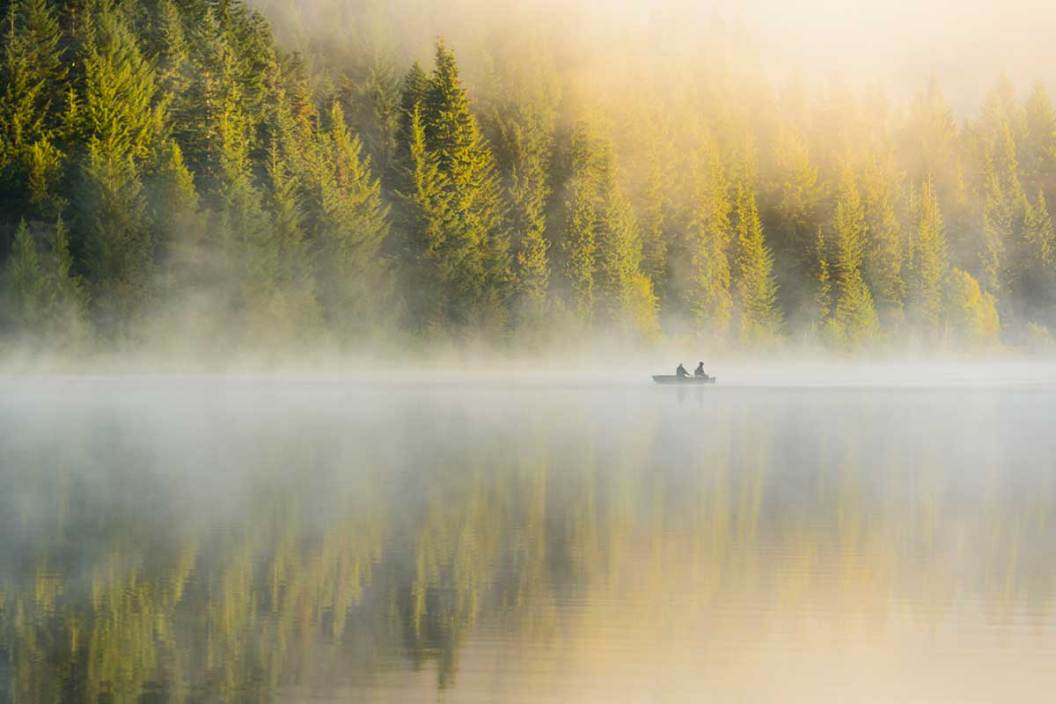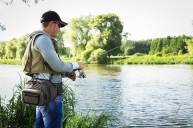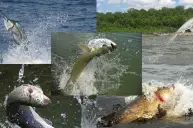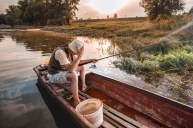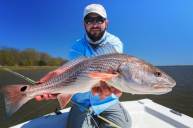We all had to learn them at some point. Here are the 11 fishing fundamentals that seem to matter the most.
Whether you are a first-time fisherman or a lifelong angler, you're surely familiar with some of these items of fishing advice that have been passed down from generation to generation.
These fishing fundamentals have stood the test of time and are often universal for serious anglers everywhere. In fact, many of these can be used for saltwater fishing as well as freshwater fishing with equal enthusiasm.
While I take no credit for originally coming up with these, I've used these techniques that were taught to me over and over and it seems as though they always work. From shallow water fishing in streams and creeks to the depths of the largest lakes, we use the waters of North America to gain an advantage, or just enjoy the great outdoors.
From my grandfather to my father to me, and from every magazine that I ever read, to things I learned just from trying, here are the best of the best when it comes to fishing skills and knowledge that shouldn't be overlooked.
Catch Your Own Bait
This may be the most simplistic thing to share, but it has to be said. For every fisherman that ever tried to catch fish, there was a worm under a rock or a crawfish on the bank waiting for him. But before we could think about catching the fish, we had to catch the bait!
Chasing nightcrawlers in the yard and capturing minnows with a net were part of the gig. We learned to use casting nets, minnow traps, and even caught grasshoppers with our hands.
Live bait has been there for the taking ever since there have been fish in the water. Since some of our favorite water-borne foes have learned to catch and eat terrestrials, it's a matter of finding the right ones and rigging them up well enough to hook a fish.
Learn to Use a Seine Net
The seine net has been a knowledge-gathering tool for all things aquatic for a long time. Bait-capturing aside, a seine net allows you to learn a lot about what's going on beneath the surface. The unseen creatures that we found in the water lent new credence to our thirst for what would catch us more fish.
I began to use one of these systems when I was a boy trying to catch crayfish for smallmouth bass fishing. We would push crawdads out of the cover of the rocks and the grass near the banks of the creek, then use the net to snatch them.
It's about the realization gained by young fishermen, and learning what those creatures mean to the waterways. In the many years since I first started using this technique, the understanding I've gained is priceless.
Hook a Live Minnow Through the Lips, Not the Back
As a young fisherman, having the liveliest bait always seemed to be the main order of business: a wriggling, fresh nightcrawler always seemed to out-fish a dead one, and a minnow that could swim freely seemed to garner the most strikes.
Then my grandfather explained to me that when gamefish attack their prey, they always turn it in their mouths—head down, no matter which direction they attacked it from. When it came time to swallow its hard-earned dinner, it would be head first. By hooking the minnow through the lips, my hook would be deeper in the fish's mouth, creating a better opportunity for a hook set.
Hold a Bullhead or a Catfish Properly
Early and often. That's how many times I got finned or "stung" by some kind of whisker-lipped fish. The likes of a channel catfish or a brown bullhead can cause some real pain if you don't hold them correctly.
Here's how to do it: Get your hand over the fish's back and place your palm on the top of the fish, with the dorsal fin—and its enclosed spine—between your thumb and forefinger. It is also imperative to keep your fingers behind the pectoral fins as well, as there are spines in those areas.
Fish Below a Digger Dam
Once, in my youth, my folks took me to New York's Southern Tier Region to visit a friend that had property on one of the district's famed wild trout streams, Wiscoy Creek. One of western New York's premier streams for wild brown trout, the Wiscoy has a special place in my memory. I'm inundated with visions of old mill ponds and wild fish chasing bait in the shallows.
On one particular trip there, my grandfather handed me an old fiberglass rod equipped with a Zebco 404 reel and one fresh nightcrawler as bait. Just below the old mill pond was a small digger dam, created to direct more water to crank the old mill wheel.
My grandfather handed me the gear and gave me strict orders to hold my bait right in the fall of the water, which at that time couldn't have been more than a foot of drop. Within a few minutes my line began to run away downstream after a beautiful 16-inch wild brown trout had eaten my worm!
The lesson learned was extraordinary. I know now that it was a great hiding place for trout to ambush prey washed over the falls, and that it has more oxygen due to the circulating waters. That seems like common knowledge, but to a young boy with a lifetime left to fish, it was tantamount to grabbing the gold ring on a carnival ride.
Fish the Shadows and the Slow Spots
The sun matters in fishing.
Fish living in or near a current need to rest at some point, and they also need to have access to shade. Fishermen need not overlook even the smallest shady area that can hold a fish or group of fish.
Always Walk Upstream
Fish in creeks, streams, and rivers face into the current. When you walk downstream you're walking straight towards fish that are looking right at you, and odds are, you will spook them.
I learned long ago that walking upstream doesn't mean you won't get skunked, but it's the preferred way. Working your way upstream can give the stealthy fisherman a chance to get into an area holding fish, and even make it possible to stay for extended periods targeting them.
The Bow and Arrow Cast
For anyone who has ever seen fish hold-up in an impossible area, the use of this technique can be remarkable. Overhanging trees, seemingly impenetrable brush, and especially under docks are places where fishermen want to cast, and this casting procedure can be great.
Get your fingers around the hooks of your lure or bait offering, pull it back while putting some bend in your fishing rod, and let go to launch it.
This obviously needs to be practiced over and over to get the hang of it. There's a clear and present danger of hooking yourself, something no angler wants to do. But if you can master this move, you'll unveil a hole new tool in your fishing toolbox.
Use Some Kind of Backing When Spooling Braided Line
The onset of braided fishing lines was a game-changer of epic proportions in the fishing world. But with all new things comes a learning curve, and braided lines would need more than a few.
One of the most useful lessons was that without some kind of backing, an entire reel full of braided line could slip on the spool, causing a severe objective breakdown. Since this simply would not do, fishermen came up with the great idea of putting some backing (an inexpensive, no-slip line) on there first.
Whatever the case, if the line were to move on the spool while fighting a fish, especially a large fish, an angler might have an aneurism. We definitely can't let that happen.
Coloring Your Fishing Line With a Fabric Marker
Back when I was married, my ex-wife was quite adept at quilting and, interestingly enough, taught me a few things about it as well. One of those minute details involved the use of a fabric marker.
Since most braided lines come in various colors that aren't always ideal, marking the existing line was the next bright idea.
I take a blue marker—sky blue, to be exact—and use a razor knife to cut a slit in the marker's tip. Since the marker now has an area cut open and accessible, I can run my line right through it.
Even in the clearest water, the color of the line then tends to help it disappear in the water. It can take a few tries to get the color just right for the line that you are using, but fabric markers aren't all that expensive and have a long life if they're taken care of it. They're the kind of fishing equipment you wouldn't normally carry in your tacklebox, but probably should.
Using Your Fingers to Tell the Time
Here's some advice that worked way back when and it still works now. I think it was an old magazine that taught me how to tell how much time you have before the sun sets, and it works with remarkable accuracy.
Stretch either hand out in front of you at full arm's length with your palm flat and facing inwards towards yourself. Stack you fingers on each other and tuck your thumb in tight. Each finger width represents 15 minutes. Four fingers means one hour, and so on. Back it up with your watch or your phone, and you will see how remarkably accurate this is!
Ending Thoughts
While I feel like I learned some of these things by the seat of my pants, I still view them as super important lessons. If necessity is the mother of invention, then fishermen are an inventive lot.
Experienced anglers come from the fact that they had to have a few fishing adventures before they could become better at the skill. Once we became adept at identifying the fish species we knew that it was only a matter of time before our fishing experience grew. It was then that we graduated from simple worms and hooks to knot tying, artificial lures, and catch and release.
New anglers can benefit from these fundamentals, but the best fishing tips are learned through experience.
Looking for a new way to display those antler sheds? Go to Rack Hub and use the coupon code Craiger. Be sure to follow my webpage, or on Facebook and YouTube.
Products featured on Wide Open Spaces are independently selected by our writers and editors. However, when you buy something through our links, we may earn a commission.
NEXT: QUIZ: HOW MANY OF THESE 55 BASS FISHING EXPERIENCES HAVE YOU HAD?
